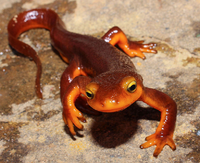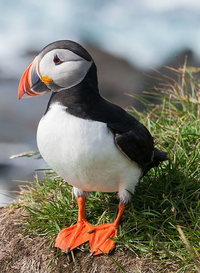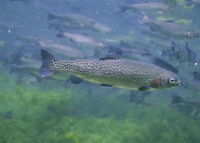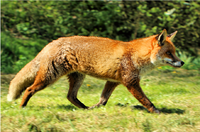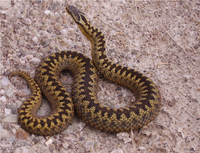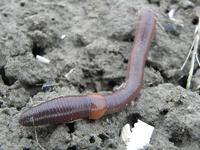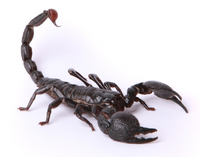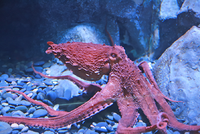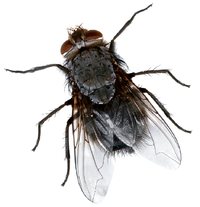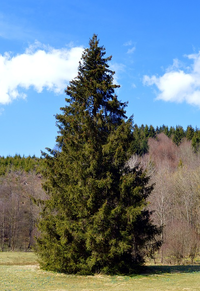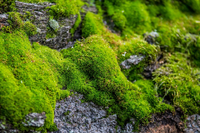Difference between revisions of "Taxonomy"
(→Flowering Plants and other Plants) |
|||
| Line 59: | Line 59: | ||
| style="height:20px; width:200px; text-align:center;" |[[Fern|Ferns]] | | style="height:20px; width:200px; text-align:center;" |[[Fern|Ferns]] | ||
|} | |} | ||
| + | |||
| + | ==Key Stage 4== | ||
| + | ===Meaning=== | ||
| + | '''Taxonomy''' is sorting living [[organism]]s into groups based on their similarities. | ||
| + | |||
| + | ===About Taxonomy=== | ||
| + | : Before the discovery of [[DNA]] '''taxonomy''' was purely based on the appearance and behaviour of [[organism]]s. | ||
| + | [[Carl Linnaeus]] developed a system of '''taxonomy''' based on the similar characteristics of [[organism]]s. [[Organism]]s were put into groups and sub-groups: | ||
| + | *Kingdom - The largest group. Examples include [[animal]]s and [[plant]]s. | ||
| + | *Phylum - The second largest group. Examples include [[chordata]] (animals with a backbone) and [[Arthropoda]] (animals with jointed legs and segmented bodies). | ||
| + | *Class - Examples include [[mammal]]s (humans, neanderthals, chimpanzees, bonobos, gorillas, baboons, lemurs, dolphins, whales, cows, badgers) and [[bird]]s (crows, ostriches). | ||
| + | *Order - Examples include [[primate]]s (humans, neanderthals, chimpanzees, bonobos, gorillas, baboons, lemurs) and [[cetacea]] (dolphins and whales). | ||
| + | *Family - Examples include [[hominidae]] (humans, neanderthals, chimpanzees, bonobos and gorillas) and [[Cercopithecidae]] (baboons). | ||
| + | *Genus - Examples include [[Homo]] ([[human]]s and [[neanderthal]]s) and [[Pan]] (chimpanzees and bonobos). | ||
| + | *Species - Sapien is the name for the [[human]] [[species]]. | ||
| + | Developments in [[genetic]]s have further added to this system with three [[Domain]]s above the [[Kingdom]]s: | ||
| + | *Archae - Primitive forms of [[bacteria]]. | ||
| + | *Bacteria | ||
| + | *Eukaryota - All [[Eukaryotic Cell|eukaryotic]] [[organism]]s. | ||
| + | : Analysis of [[DNA]] evidence has resulted in many changes to where [[organism]]s are placed in the '''taxonomy''' system. For example Panda's were once though to be closely related to the weasel but genetic evidence shows they are a type of bear moving them from the family; Mustelidae to the family; Ursidae. | ||
Revision as of 14:58, 7 April 2019
Contents
Key Stage 2
Meaning
Classification of living things is done to make it easier to identify different creatures.
About Grouping Living Things
- Living things can be classified in different ways.
- Scientists usually classify things by common features or common behaviour.
Examples
Vertebrates and Invertebrates
- A vertebrate is an animal with a backbone.
- An invertebrate is an animal without a backbone.
| Amphibians are vertebrates. | Birds are vertebrates. | Fish are vertebrates. | Mammals are vertebrates. | Reptiles are vertebrates. |
| Snails are invertebrates. | Earthworms are invertebrates. | Scorpions are invertebrates. | Octopuses are invertebrates. | Flies are invertebrates. |
Flowering Plants and other Plants
- Flowering Plants are plants that grow flowers.
- Not all plants grow flowers. There are also Mosses, Ferns and Conifers which don't grow flowers.
| Flowering Plants. | Coniferous Plants. | Mosses | Ferns |
Key Stage 4
Meaning
Taxonomy is sorting living organisms into groups based on their similarities.
About Taxonomy
Carl Linnaeus developed a system of taxonomy based on the similar characteristics of organisms. Organisms were put into groups and sub-groups:
- Kingdom - The largest group. Examples include animals and plants.
- Phylum - The second largest group. Examples include chordata (animals with a backbone) and Arthropoda (animals with jointed legs and segmented bodies).
- Class - Examples include mammals (humans, neanderthals, chimpanzees, bonobos, gorillas, baboons, lemurs, dolphins, whales, cows, badgers) and birds (crows, ostriches).
- Order - Examples include primates (humans, neanderthals, chimpanzees, bonobos, gorillas, baboons, lemurs) and cetacea (dolphins and whales).
- Family - Examples include hominidae (humans, neanderthals, chimpanzees, bonobos and gorillas) and Cercopithecidae (baboons).
- Genus - Examples include Homo (humans and neanderthals) and Pan (chimpanzees and bonobos).
- Species - Sapien is the name for the human species.
Developments in genetics have further added to this system with three Domains above the Kingdoms:
- Archae - Primitive forms of bacteria.
- Bacteria
- Eukaryota - All eukaryotic organisms.
